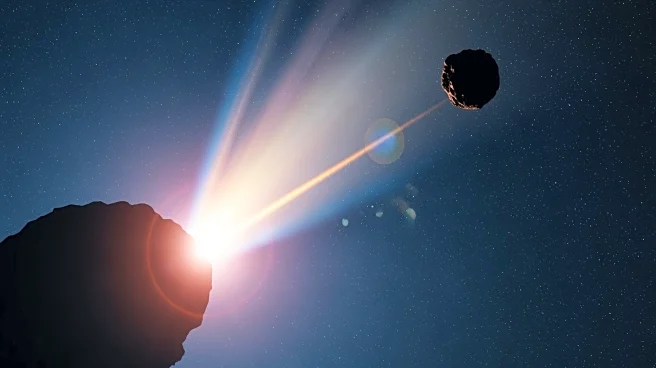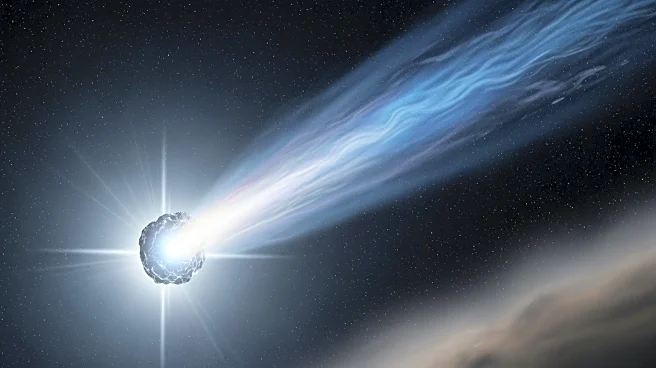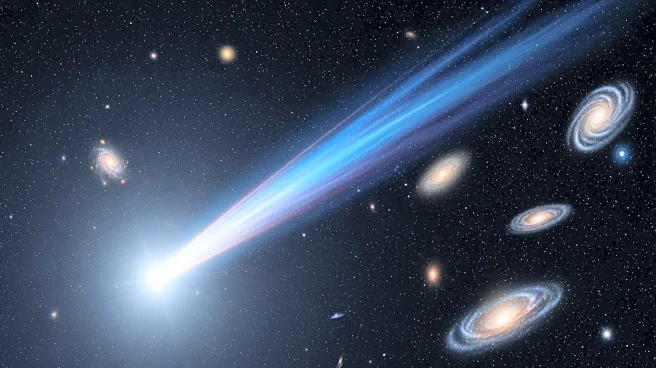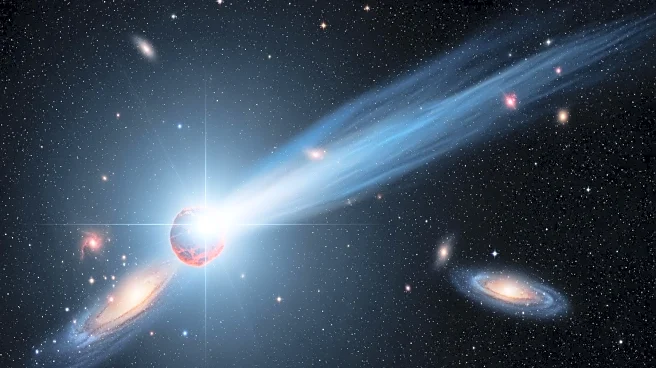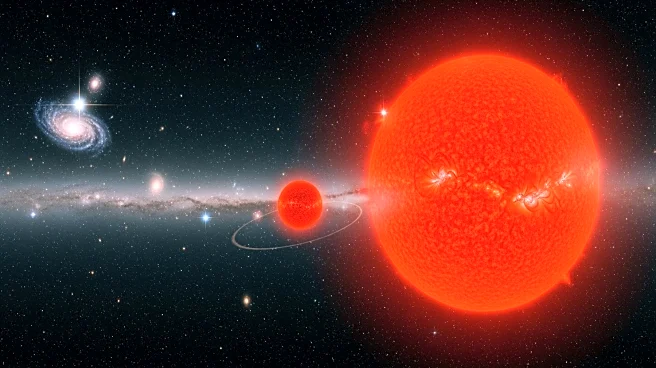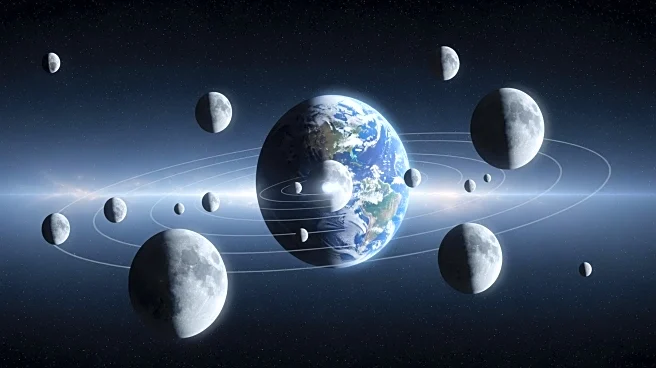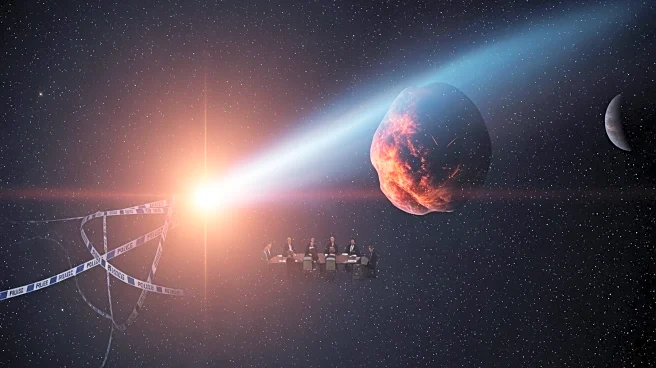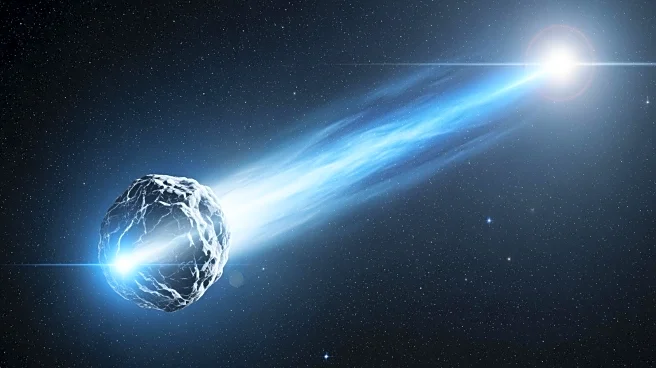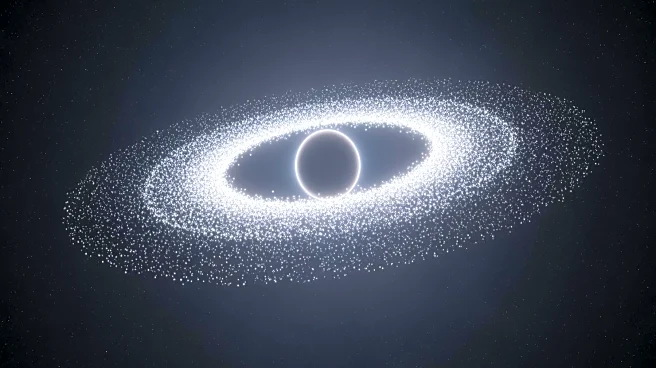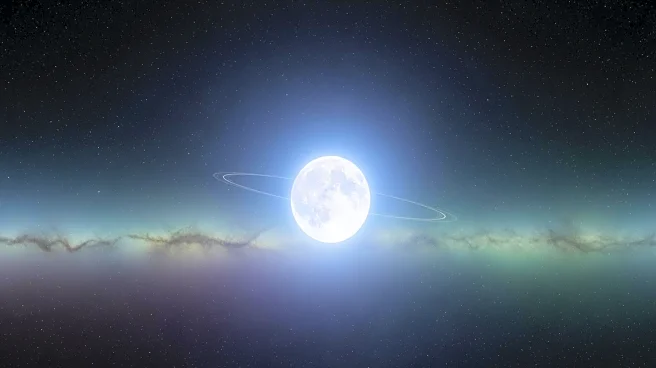What's Happening?
Astronomers have captured a striking image of comet 3I ATLAS, an interstellar object currently traversing our solar system, emitting a dramatic jet of gas and dust toward the sun. This discovery, confirmed
by observatories in Hawaii and the Canary Islands, has reignited scientific interest in these rare interstellar visitors. The comet, warming as it approaches the inner solar system, has triggered a visible jet eruption, captured in detail by the Two-meter Twin Telescope at Teide Observatory in Tenerife and the Gemini North Telescope in Hawaii. The image shows the comet's dark nucleus surrounded by a glowing coma, with a purple streak of the jet stretching approximately 10,000 kilometers from the comet's surface.
Why It's Important?
The detection of active jetting on 3I ATLAS is significant for understanding interstellar objects. Unlike comets originating from our solar system, 3I ATLAS hails from another star system, providing insights into how cometary ices behave under solar radiation. Studying such interstellar comets helps astronomers understand material formation and evolution in other planetary systems. The presence of a propelling jet offers valuable data on cosmic ices across the galaxy, contributing to the broader understanding of planetary system dynamics.
What's Next?
As 3I ATLAS continues its journey toward the inner solar system, astronomers will monitor its activity closely. The current jet eruption may be the beginning, with more expected as the comet heats further. The solar wind may cause the ejected material to drift into the comet's tail, creating a dazzling display. This observation adds to the growing body of evidence that other star systems produce icy bodies similar to comets in our own, offering a rare glimpse into interstellar dynamics.
Beyond the Headlines
The discovery of 3I ATLAS's jet provides a unique opportunity to compare its composition and behavior to previous interstellar visitors, revealing how cosmic ices vary across the galaxy. This contributes to the understanding of how materials form and evolve in different stellar conditions, offering insights into the diversity of planetary systems.
